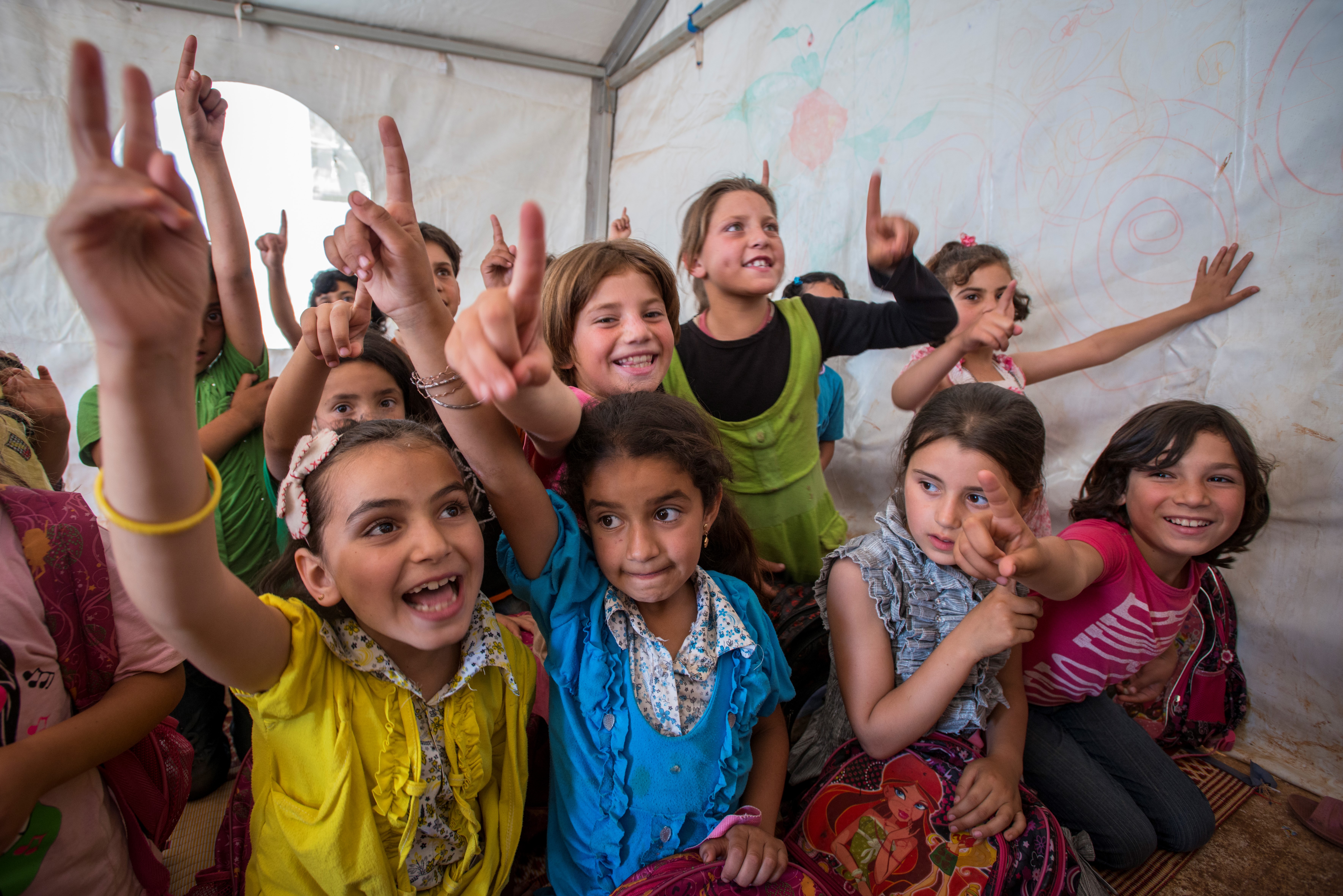Leveraging Good Data for More Effective Disaster Philanthropy
In a world where humanitarian crises are increasing in complexity, frequency and duration, philanthropy has a unique opportunity to provide flexible funding to the places that need it most. High quality data is a critical component to making informed investments and working successfully with fellow donors and implementers.
 |
|
Children in a makeshift school run by the IRC at the Karameh displacement camp in Syria’s Idlib Governorate. Photo credit: Peter Biro/IRC |
As highlighted in the most recent edition of the annual World Humanitarian Data and Trends report published by the United Nations Office for the Coordination of Humanitarian Affairs (OCHA), more than 130 million people worldwide depend on humanitarian assistance for survival. Humanitarian crises have become increasingly complex, with nearly all resulting from a combination of political instability, conflict and violence, social inequities, and resource scarcity. And yet, the available funding to address these needs is insufficient as well as inequitably distributed, often concentrated toward a few high profile crises.
In order to better understand the state of humanitarian assistance, and how to more effectively address these issues, funders need to be informed by trusted, reliable information. This is why we believe resources like the Center for Disaster Philanthropy and the Measuring the State of Disaster Philanthropy are so important for the field. Produced in partnership with Foundation Center, the State of Disaster Philanthropy report and interactive dashboard provide data on philanthropic funding for disasters.
Here is how having access to good data, including information about other donors, can help funders at all three stages (pre-disaster, immediate relief, and longer-term reconstruction) of the disaster cycle:
- Too often, funders are focused on relief and response efforts after a disaster, but disaster risk management and preparedness before a crisis even occurs can help build stronger communities. Here, quality data can be critical to identifying the root causes of crises in order to promote day-before investments which mitigate risk, as opposed to only day-after responses.
- Once a crisis has occurred, timely and accurate information is key to informing philanthropists on which intervention to fund as well as coordinating resources across institutions and donors. This ensures we respond with strategic investments, and helps to prevent us from contributing to needless duplication and avoid other ineffective practices.
- Over the medium- to long-term, this information allows funders to evaluate the effectiveness of a response both during and after an intervention, informing better choices going forward. Data provide funders the opportunity to assist implementers as they adapt to the ever-changing needs and nature of these complex crises.
In the face of the world’s greatest challenges, we have a unique opportunity to leverage our collective knowledge and expertise to work more effectively together.
In this way, we can channel and share our different strengths and points of view, enabling us to look at issues from a fresh perspective and accomplish things together that we could never do independently. Discover new ways to collaborate, share, and connect with other funders through data using these State of Disaster Philanthropy instructional videos and guides.
Since Hurricane Harvey made landfall near Rockport, Texas, on August 25, the devastating storm has left several hundred thousand without power and several thousand displaced to shelters. In response to the storm, CDP has created a Hurricane Harvey Recovery Fund which will drive support for medium- and long-term recovery needs that will arise in the weeks and months to come. We expect the long-term needs to be rebuilding homes, businesses, infrastructure, meeting the needs of young children, supporting mental health needs, and boosting damaged agricultural sectors. Please click here if you’d like to support the fund.

